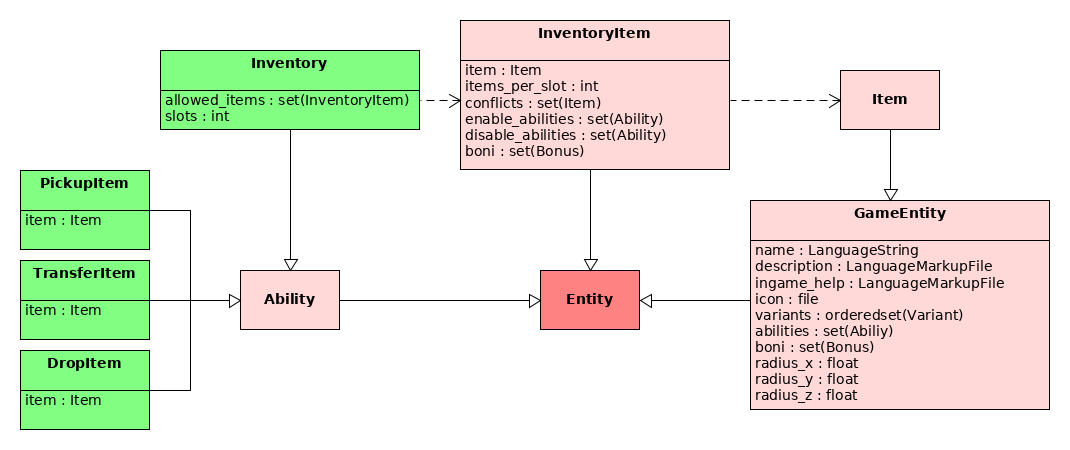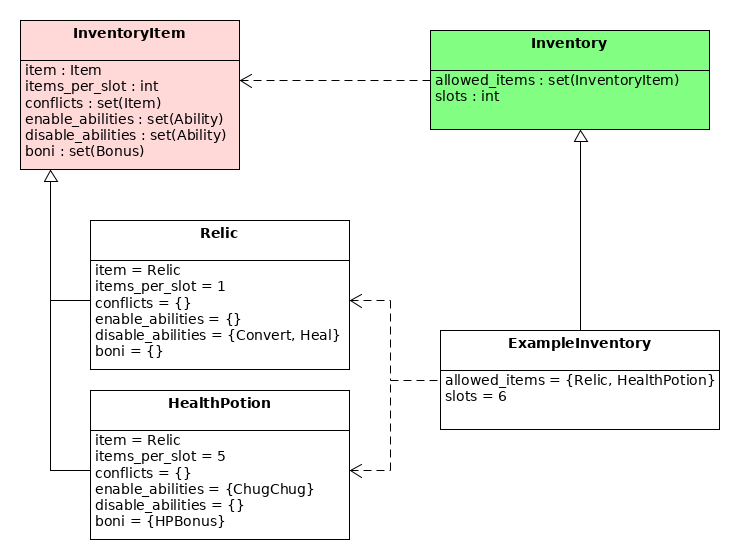Our topic for today is the Inventory ability which allows units to store items. AoE2 only offers one item, the relic, but it is very popular in custom scenarios. Considering that other strategy games implement other and more various kinds of items, it makes sense to include a fully fledged inventory system in openage, too.
Other articles in the modding API series:
- Introduction
- Units, Buildings & more
- Abilities
- Patching
- Attack
- Bonus
- Inventory System (you're here)
- Too many villagers!
- Transform
- Civilizations
- Restocking farms
Inventory

The abilities for inventory management are PickupItem, DropItem, TranferItem and Inventory. The first three of these abilities interact with items in and out of the inventory, while the actual inventory is defined by an ability that is just called Inventory. An inventory's definition is determined by a list of InventoryItems stored in the allowed_items attribute. Note that InventoryItem is different from Item and has a different purpose:
-
Itemis the (physical) representation of the item in the game world. It is aGameEntityand can therefore exist independently. This means it can also have its own abilities and boni. -
InventoryItemdefines the effect of anItemwhen it is stored in a unit's inventory. In contrast toItemit cannot exist independently and all of its effects are applied to the inventory owner.InventoryItemalways references theItemfor which it stores the effect in itsitemmember.
The benefit of modeling the inventory system like this is that the same item can have different effects for different units. We already know a situation where this is useful because a similar behavior can be observed in AoE2. When stored in a monk's inventory, a relic provides no boni (and even takes away some of their abilities). However, when inside a monastery's inventory it provides a continuous gold bonus to the player. Another more RPG-like example would be a health potion that provides 20HP when a villager consumes it, while a mighty and experienced warrior gets 100HP from using it.
By keeping Item and InventoryItem as separate API objects, we also have more options for items that are outside of an inventory and lie on the ground. Because an Item game entity can have its own abilities assigned, we could enable it to run away or hide from the player, summon units for its protection or just have it mind its own business by chopping trees in the woods.
A closer look at InventoryItem

The effects of InventoryItem that we briefly touched a few paragraphs before are the following: First of all, InventoryItem can grant a variable number of boni to the inventory owner through the boni set attribute. In addition to this, InventoryItem is allowed to take away units' abilities (through disable_abilities) and add entirely new ones (through enable_abilities). This means that a unit's abilities - like Attack - can potentially be swapped for better (or worse) versions of the ability.
items_per_slot determines how many items of the same type can be stacked in one inventory slot. In the diagram we see that HealthPotion can be stacked 5 times before a new slot is required. In consequence, the ExampleInventory can hold up to 30 health potions, while the maximum number of relics is 6. Of course, relics and health potions can be in the inventory at the same time, but every inventory slot can only be occupied by one type of item.
An interesting attribute is conflicts. While the Item specified in item resides in the inventory, items listed in conflicts cannot be there at the same time. This is useful when items are supposed to be incompatible with each other, for example a holy relic and a satanic bible. It can also be beneficial for a rudimentary equipment system where a unit is only allowed to wear one garment for each body part. Considering the complexity, an equipment system should probably have its own ability, but this is something for a future version of the API. After all, we are still making a real-time strategy engine and not an RPG*.
Last but not least, we will show you a code example showing how storing relics from AoE2 would work with Inventory and InventoryItem.
1 2 3 4 5 6 7 8 9 10 11 12 13 14 15 16 17 18 19 20 21 22 23 24 25 26 27 | |
* If you're interested in that though, check out Flare.
Questions?
Our next blogpost will be about a very special and complicated unit from AoE2 - the villager, or rather the villagers. Tune in next week when we tame this beast and adapt its quirks to our modding API.
Any more questions? Let us know and discuss those ideas by visiting our subreddit /r/openage!
As always, if you want to reach us directly in the dev chatroom:
- Matrix:
#sfttech:matrix.org - IRC:
#sfttechon libera.chat
 openage dev updates
openage dev updates